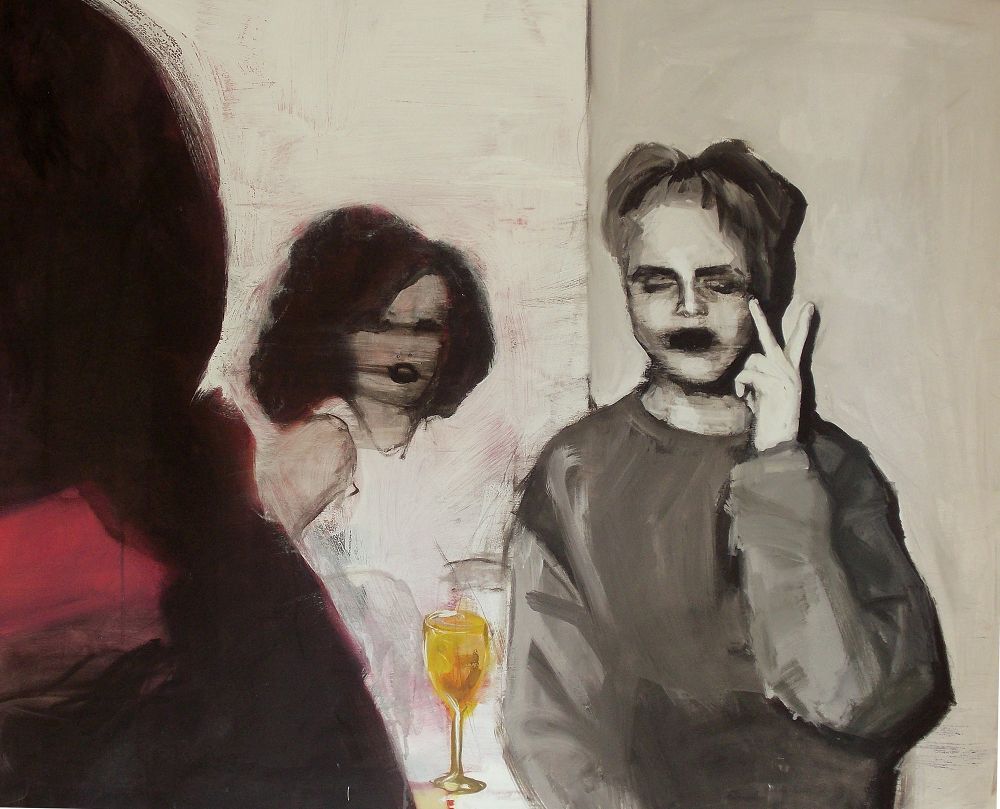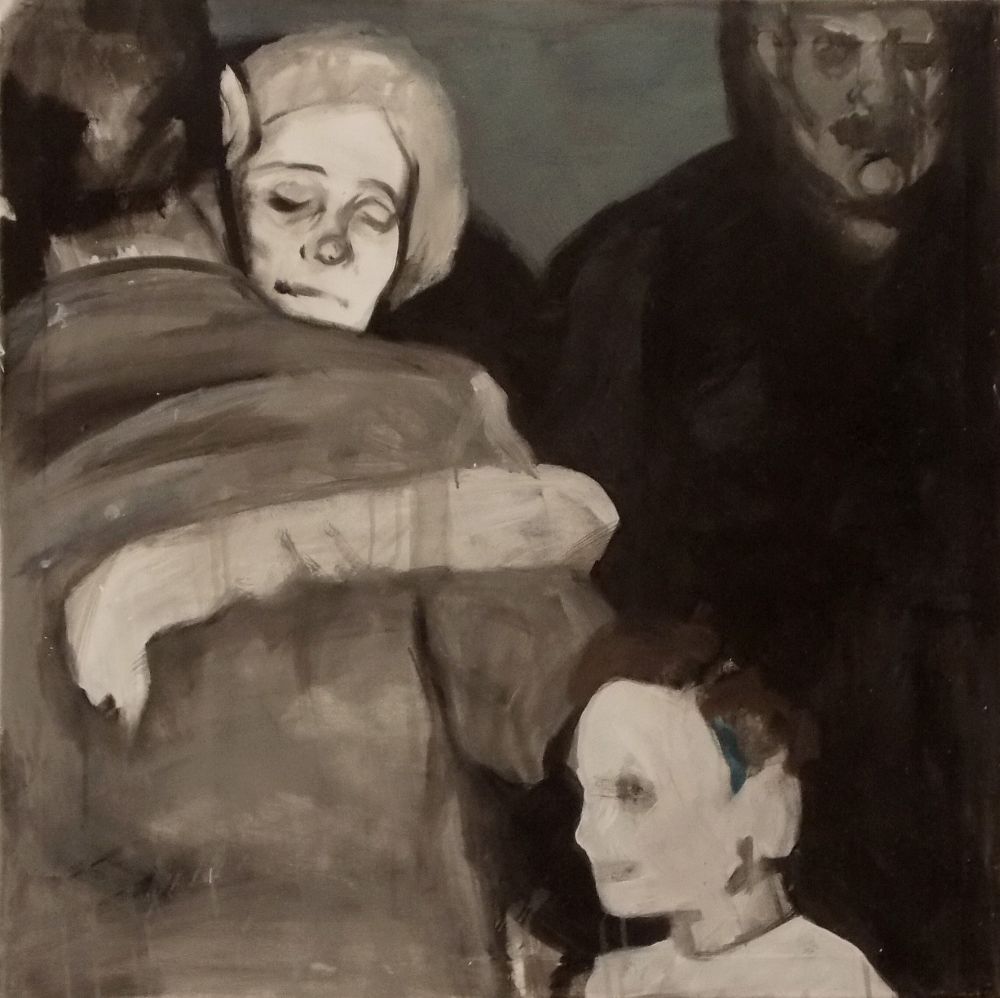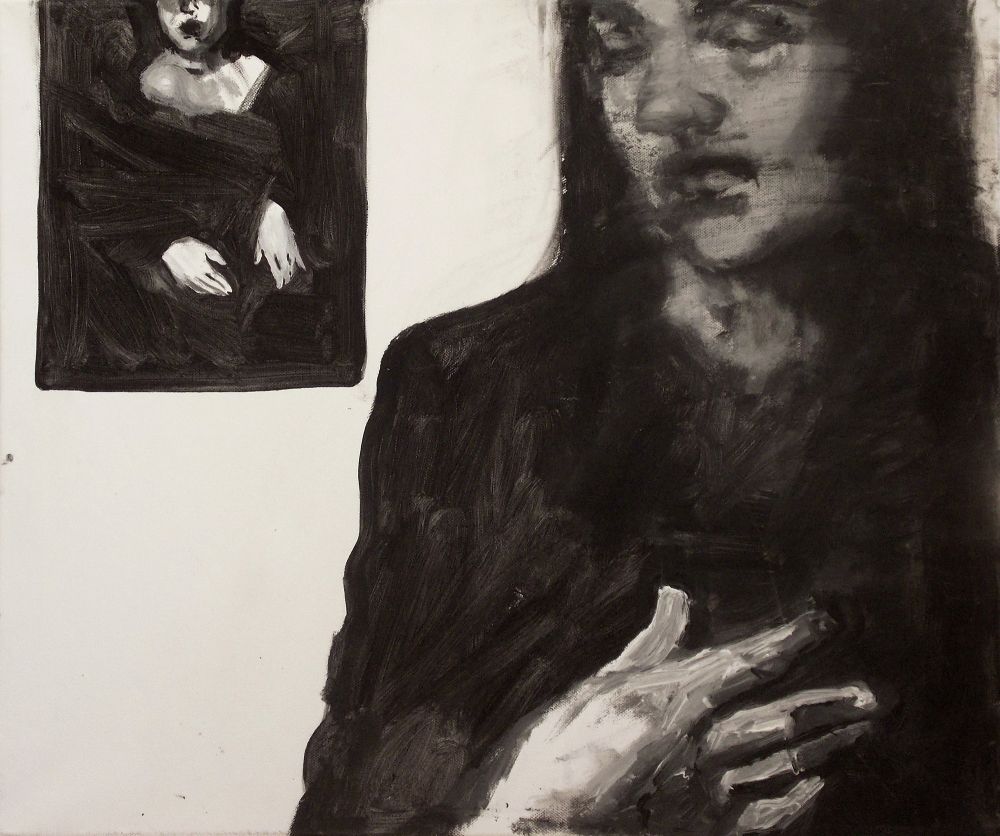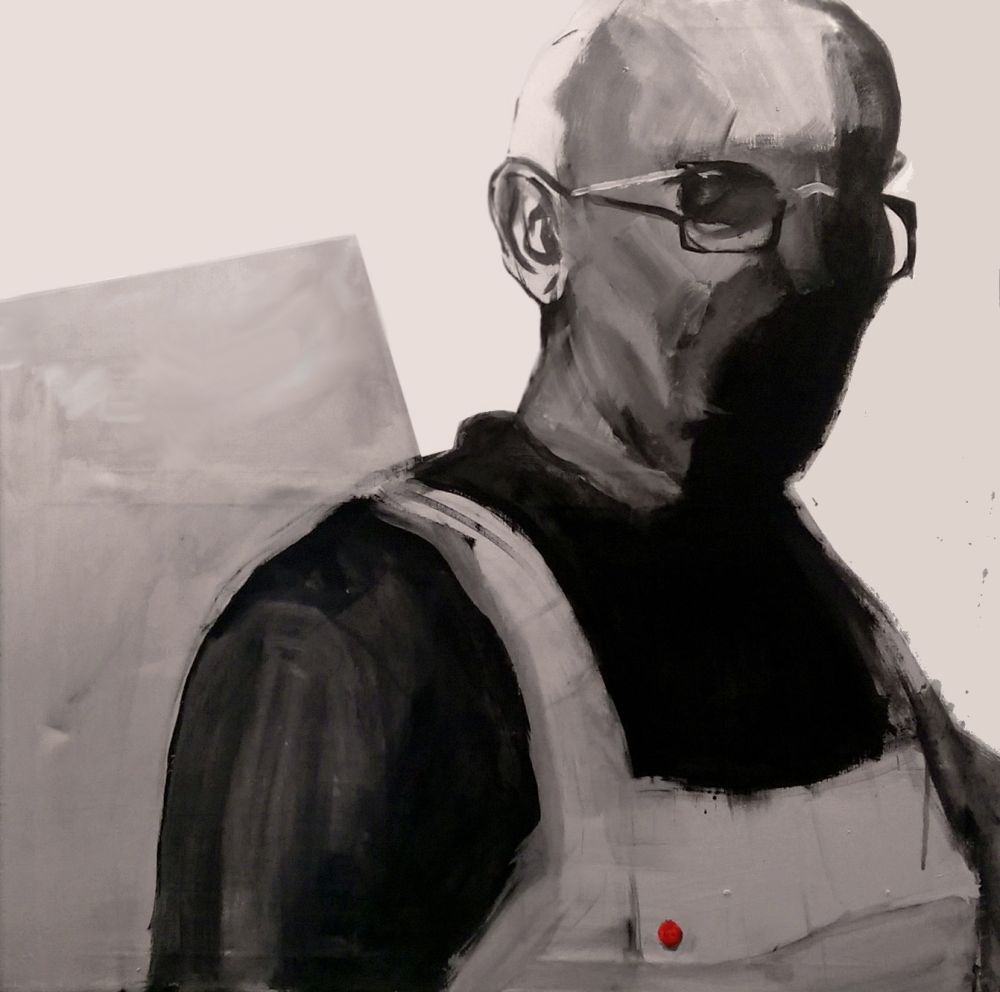Bazsik Anna
anna.bazsik@gmail.com
Idegen I. / Stranger I. (58 x 58 cm), Idegen III. / Stranger III. (100 x 120 cm), Idegen IV. / Stranger IV. (100 x 100 cm), Idegen V. / Stranger V. (50 x 60 cm), Idegen VIII. / Stranger VIII. (110 x 110)
akril, vászon / acrylic, canvas
A festményeken megjelenő emberek idegenek, más és más szituációban, a festmény terében mégis együtt lépnek fel. A szituációk összemosódnak, létrejön az, amire azt szokták mondani: 1+1=3. A képeken mozaikosságot tapasztalhatunk, fotómontázsszerű festményeket láthatunk. A szituációk kialakítása közben nem egy narratíva létrehozása, hanem esztétikus kép készítése a cél. A különböző hangulatállapotok, esztétikai döntések végén egy olyan kép jön létre, ami tobzódik a felületek sokaságában, különböző festői minőségekben, lazúros és pasztózus festékrétegekben, illetve a különböző szituációk összeadódnak, így az idegenek közelebb kerülnek egymáshoz. Ha idegenekről beszélünk, egy idegen dolgot szeretnénk megérteni, és mindenképp szem előtt kell tartanunk, hogy ismereteink igazak-e, vagy legalább közel állnak-e a valósághoz. Figyelembe kell vennünk azt is, mennyire lehet egy festmény valós, illetve mi lehet a festmény igaz része. A fekete-fehér festés rájátszik a valóság kérdésére. Az alkotói folyamat szabad, előre meg nem tervezett, a festésmód expresszív. Nem az a cél, hogy narratívákon gondolkodjunk, hanem hogy mi is átélhessük saját idegenségünket.
The people appearing in the paintings are strangers, depicted in various situations, but acting together within the area of the picture. The situations run into each other, and create what might be called a sum of one plus one equals three. Mosaic-like features appear in the paintings, with images similar to photomontages. In depicting the situations, the aim is not to create a narrative, but an aesthetic image. With the passing of each situation, the strangers become closer acquainted. Each stranger presents an enigma that we would like to understand, but we can not be sure that what we think is true or not. We also need to consider the degree to which a painting, or even a part of a painting, can be real. The black-and-white painting plays on the question of reality. The creative process is free and unplanned, and the style of painting is expressive. The point is not merely to follow a narrative, but rather to face our own sense of alienation.



